Search the Blog
Categories
- Books & Reading
- Broadband Buzz
- Census
- Education & Training
- Friday Reads
- General
- Grants
- Information Resources
- Library Management
- Nebraska Center for the Book
- Nebraska Libraries on the Web
- Nebraska Memories
- Now hiring @ your library
- Preservation
- Pretty Sweet Tech
- Programming
- Public Library Boards of Trustees
- Public Relations
- Talking Book & Braille Service (TBBS)
- Technology
- Uncategorized
- What's Up Doc / Govdocs
- Youth Services
Archives
Subscribe
Tag Archives: #FridayReads
Friday Reads: The Keeper of Lost Causes: The First Department Q Novel by Jussi Adler-Olsen
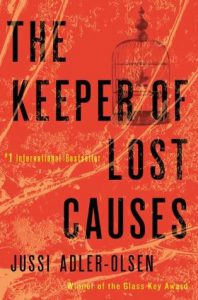 This book came to me by way of a recommendation from a book club member who also reads mysteries and series. I have read Nordic Noir authors Jo Nesbo, Steig Larsson, and Henning Mankell, but I had not read any books from the Department Q Series by the Danish author Jussi Adler-Olsen. All of the authors have a reputation for their dark descriptions of crime, twisted plots, and grizzled detectives. This book follows a popular recipe for sleuths: troubled personal relationships, inability to get along with co-workers, abuser of substances, and a brilliant deductive mind. The plot goes back and forth between the last week Detective Carl Mørck was a homicide detective and the present, when he is assigned to lead a newly created Department Q – a literal closet in the basement of the police department where the most difficult cold cases reside.
This book came to me by way of a recommendation from a book club member who also reads mysteries and series. I have read Nordic Noir authors Jo Nesbo, Steig Larsson, and Henning Mankell, but I had not read any books from the Department Q Series by the Danish author Jussi Adler-Olsen. All of the authors have a reputation for their dark descriptions of crime, twisted plots, and grizzled detectives. This book follows a popular recipe for sleuths: troubled personal relationships, inability to get along with co-workers, abuser of substances, and a brilliant deductive mind. The plot goes back and forth between the last week Detective Carl Mørck was a homicide detective and the present, when he is assigned to lead a newly created Department Q – a literal closet in the basement of the police department where the most difficult cold cases reside.
Thinking this is a promotion, Carl soon realizes this position will take him out of action. The first case he selects from boxes and boxes of cold cases involves trying to find a missing politician captured five years ago and assumed by many to be dead. Carl is assigned a staff of one – a man with a mysterious past named Hafez el-Assad. Initially Carl views Assad as not much more than a driver and personal assistant, but Assad makes himself a real partner in solving cases and becomes invaluable to the department. At home, Carl is separated from his wife Vigga, is a sometimes guardian to his stepson, and is in need of the rent that is paid by his opera-loving lodger to make ends meet. This book will take you on a ride that is sinister and horrifying. Expect that with Nordic Noir.
For those who have Amazon Prime, the first three books in the Department Q series are also films in Danish with subtitles. I found the casting to be spot on and the Danish countryside both beautiful and foreboding.
Adler-Olsen, Jussi, The Keeper of Lost Causes: The First Department Q Novel. New York: Dutton, 2011.
Friday Reads: Hogfather, by Terry Pratchett
If it’s the end of the year, then it must be Hogswatch! 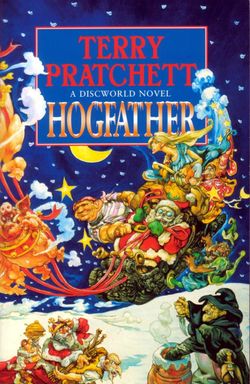 But, the Hogfather is missing! How can we have Hogswatch without him? Not to worry, Death is here to save the day, filling in for him so that all the children will still get their gifts. What could possibly go wrong?
But, the Hogfather is missing! How can we have Hogswatch without him? Not to worry, Death is here to save the day, filling in for him so that all the children will still get their gifts. What could possibly go wrong?
Hogfather is the 20th book in Terry Pratchett’s Discworld series. And it’s one of the most entertaining, in my opinion. If you haven’t read any Discworld books yet, that’s OK. This one can be read on its own. There’s enough detail and explanation to understand what’s happening. But, for those of you new to this series, Discworld is a magical world, filled with witches, wizards, dragons, trolls, and dwarfs. Physically, it’s a flat disc, sitting on the backs of four enormous elephants, which are standing on the back of an enormous turtle slowly swimming through space. You will recognize some similarities to our world, but since it does have magic, things are quite different.
It’s almost Hogswatchnight, and while Death is keeping up with some of the Hogfather’s duties, there’s still the problem of what happened to him. Luckily, Death’s granddaughter Susan is also on the case. While Death is trying to ensure that people will keep believing in the Hogfather, she’s trying to find him. It turns out that there will be more serious problems than a lack of gifts without a Hogfather. Belief in him also happens to be important to keep other parts of the world working properly. In order to save the Hogfather and Hogswatch, Susan must deal with the “Oh God” of Hangovers, interfering wizards, the realm of the Tooth Fairy, and Mister Teatime, an assassin who insists that his name is pronounced ‘teh-ah-tim-eh’.
As with all of the Discworld books, Hogfather is both a comic fantasy and a satirical commentary on our world. But, this novel also deals with the nature of belief and how important it can be to us, whether we realize it or not. It’s the kind of book you will need to read more than once to absorb the depth and meaning of the storytelling.
If you’re looking for a really fun seasonal read that will restore your faith in humans, Hogfather is the book for you. HAPPY HOGSWATCH!
Pratchett, Terry. Hogfather. New York: Harper, 1996.
Friday Reads: Horrorstor by Grady Hendrix
 Horrorstor is a fun, quick read, perfect for the holiday shopping season. It’s a horror story, set in a big box store, formatted to look like a catalog. Author Grady Hendrix has seen a lot of horror movies, and if you have too, there are references aplenty for you to enjoy. He’s also spent a lot of time in Ikea (and does name-check them, as the superstore Orsk is knockoff of the Swedish retail giant) and has a lot of fun with the names of products accordingly. The book has just enough digs about consumer capitalism to make you feel smart, and enough broadly-drawn but relatable characters to make you not dwell on anything too downbeat.
Horrorstor is a fun, quick read, perfect for the holiday shopping season. It’s a horror story, set in a big box store, formatted to look like a catalog. Author Grady Hendrix has seen a lot of horror movies, and if you have too, there are references aplenty for you to enjoy. He’s also spent a lot of time in Ikea (and does name-check them, as the superstore Orsk is knockoff of the Swedish retail giant) and has a lot of fun with the names of products accordingly. The book has just enough digs about consumer capitalism to make you feel smart, and enough broadly-drawn but relatable characters to make you not dwell on anything too downbeat.
The book would make a good gift, for the reader with a sense of humor on your list. (Or a library book to check out and have in the house, for the family introvert during a holiday gathering.) Are there plot holes? Yes! Is it a masterpiece? No! Is it enjoyable? Definitely. Can you read it surrounded by family being loud, with every TV and speaker in the house on a different channel, while full of sugar? Yes. You’ll still be able to follow the story. You’ll root for the employee character of your choice to make it through the single overnight shift in the possibly haunted, definitely scary Orsk location in Cuyahoga, Ohio, built on the site of an abandoned experimental prison, the Cuyahoga Panopticon. The narrative design is a lot more straightforward than any big box store design. The author is having a good time, and he wants the reader to have one, too.
Hendrix, Grady. Horrorstör: A Novel. Philadelphia, Pa: Quirk, 2014. Print.
Friday Reads: Podcasts as Books
I’m rather late to the world of podcasts, but I’ve been finding more and more really good ones. Even better, I’ve been finding related books for when I just want more of the story or just need a break from listening. Here’s a list of a few I’ve recently gathered:
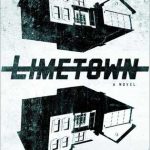 Limetown. “What happened to the people of Limetown?” Three hundred people living in a small town in Tennessee seemingly disappeared overnight, including Lia Haddock’s uncle Emile. Lia, a journalist, investigates the mysterious research facility and the surrounding town looking for answers as to what really happened that night. The book goes back to seventeen-year old Lia’s, looking for answers about her family who all refuse to talk about the incident, alternating with Emile’s story leading up to the project in Limetown.
Limetown. “What happened to the people of Limetown?” Three hundred people living in a small town in Tennessee seemingly disappeared overnight, including Lia Haddock’s uncle Emile. Lia, a journalist, investigates the mysterious research facility and the surrounding town looking for answers as to what really happened that night. The book goes back to seventeen-year old Lia’s, looking for answers about her family who all refuse to talk about the incident, alternating with Emile’s story leading up to the project in Limetown.
Smith, Cote. Limetown: The Prequel to the #1 Podcast. 2018. Print.
 Welcome to Night Vale. Presented as a community radio show, the podcast follows Cecil as he updates residents of this small desert town of all the everyday sorts of activities and events, including the dog park, the ghosts, angels, government conspiracies, and such. While I’m still making my way through the podcast archives, I’m sure I’m missing some of the references throughout the book, but it’s still wonderfully weird. The book follows two residents, Diane with her shape-shifting son, and Jackie who owns the pawn shop, and their search for the meaning of “King City.”
Welcome to Night Vale. Presented as a community radio show, the podcast follows Cecil as he updates residents of this small desert town of all the everyday sorts of activities and events, including the dog park, the ghosts, angels, government conspiracies, and such. While I’m still making my way through the podcast archives, I’m sure I’m missing some of the references throughout the book, but it’s still wonderfully weird. The book follows two residents, Diane with her shape-shifting son, and Jackie who owns the pawn shop, and their search for the meaning of “King City.”
Fink, Joseph & Cranor, Jeffrey. Welcome to Night Vale. 2015. Print.
Sawbones. Dr. Sydnee McElroy and her husband explore how modern medicine has evolved and “all the dumb, bad, gross, weird and wrong ways we’ve tried to fix people.” Think eating powdered mummies, using opium or radium as a cure-all, and drilling holes in your head. Although an entertaining introduction to medical history, the book does seem to have a number of editing issues that can be distracting.
McElroy, Justin & McElroy, Sydnee. The Sawbones Book: The Hilarious, Horrifying Road to Modern Medicine. 2018. Print.
 Lore. Each chapter examines a different “creature” (ghosts, vampires, werewolves, goblins…) and the legends, folklore, or history surrounding them and how they relate to human nature. Great for anyone interested in supernatural/urban legends kinds of things. Though, if you’ve listened to the podcast, the illustrations may be new to you, but the stories are more transcripts.
Lore. Each chapter examines a different “creature” (ghosts, vampires, werewolves, goblins…) and the legends, folklore, or history surrounding them and how they relate to human nature. Great for anyone interested in supernatural/urban legends kinds of things. Though, if you’ve listened to the podcast, the illustrations may be new to you, but the stories are more transcripts.
Mahnke, Aaron. The World of Lore: Monstrous Creatures. 2017. Print.
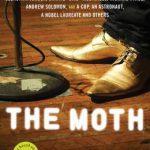 The Moth. True stories told live in front of crowds worldwide, diverse storytellers share their experiences which can be anywhere from dumb things they’ve done to joyful to heartbreaking. The book contains fifty stories from The Moth’s archives. Good if you just want to read some interesting life stories.
The Moth. True stories told live in front of crowds worldwide, diverse storytellers share their experiences which can be anywhere from dumb things they’ve done to joyful to heartbreaking. The book contains fifty stories from The Moth’s archives. Good if you just want to read some interesting life stories.
Burns, Catherine (editor). The Moth. 2013. Print.
Friday Reads: Uncommon Type: Some Stories by Tom Hanks
 Who knew Tom Hanks was an author? Even though his writing has appeared in The New York Times, Vanity Fair, and The New Yorker, my introduction came through his book entitled Uncommon Type: Some Stories – a collection of seventeen short stories written (and read in the audio form) by Tom Hanks. This review is specific to the audio version and each short story revealed itself to me as a brief movie performed by Hanks. Tom’s narrative is visual and I saw characters and entire sets because his voice is so closely associated to the medium of film. Interestingly, when one of his stories intersected with subject matter Hanks had previously portrayed in a movie (space travel for example), I could not help but think of that particular corresponding movie and this was not an interrupter, but an enhancement. This book was enjoyable if only for the sake of having Tom’s voice in my ear. Just like listening to Steve Martin, Robin Williams, Tina Fey, or Carol Burnett read their own work, it is the quality, comfort, and familiarity of the voice that adds pleasure to the text.
Who knew Tom Hanks was an author? Even though his writing has appeared in The New York Times, Vanity Fair, and The New Yorker, my introduction came through his book entitled Uncommon Type: Some Stories – a collection of seventeen short stories written (and read in the audio form) by Tom Hanks. This review is specific to the audio version and each short story revealed itself to me as a brief movie performed by Hanks. Tom’s narrative is visual and I saw characters and entire sets because his voice is so closely associated to the medium of film. Interestingly, when one of his stories intersected with subject matter Hanks had previously portrayed in a movie (space travel for example), I could not help but think of that particular corresponding movie and this was not an interrupter, but an enhancement. This book was enjoyable if only for the sake of having Tom’s voice in my ear. Just like listening to Steve Martin, Robin Williams, Tina Fey, or Carol Burnett read their own work, it is the quality, comfort, and familiarity of the voice that adds pleasure to the text.
Some stories were more enjoyable than others were and the ones that I really enjoyed have stayed with me. Hank’s first story is about two best friends from elementary school who turn their life-long friendship into a romance against their friend’s advice. The second is about a WWII veteran who makes an annual Christmas Eve call to his friend who saved his life in battle on Christmas Eve not so many years ago. Another story is about a newly divorced woman with clairvoyant skills who moves with her three children to Green Street. The acceptance she feels from her new neighbors helps her embrace her new life. I am typically not very excited about a collection of short stories, but I very much enjoyed my time with these.
Hanks, Tom. Uncommon Type: Some Stories. New York: Knopf. 2017
Friday Reads – The Last Cruise: A Novel by Kate Christensen
 Kate Christensen’s The Last Cruise is not a memoir, travel guide or cruise promotion. It is a novel rich with a range of disparate, colorful and conflicted characters. The 400 some travelers are on an ocean voyage destined for unexpected and challenging adventure. While dissimilar, the book reminded me of Katherine Anne Porter’s Ship of Fools, a book I read many years ago before taking a first cruise. The Last Cruise might be better likened to the Titanic, and throw in the Love Boat, too. There are elements of all with personal crises, conflict, satire, romance, and bits of comedy.
Kate Christensen’s The Last Cruise is not a memoir, travel guide or cruise promotion. It is a novel rich with a range of disparate, colorful and conflicted characters. The 400 some travelers are on an ocean voyage destined for unexpected and challenging adventure. While dissimilar, the book reminded me of Katherine Anne Porter’s Ship of Fools, a book I read many years ago before taking a first cruise. The Last Cruise might be better likened to the Titanic, and throw in the Love Boat, too. There are elements of all with personal crises, conflict, satire, romance, and bits of comedy.
The cruise ship is the Queen Isabella, a 1950s elegant and vintage ocean liner. The voyage is the ship’s last and intended to be followed by a trip to the scrapyard. Guests board the ship at Long Beach, California, for a two-week cruise to Hawaii and back. A retro theme is planned in recognition of the ship’s origins and fate. Passengers expect to enjoy the experiences of mid-20th century luxury cruising with fine dining, cocktails, string quartets, and jazz. Central to the story is Christine Thorne. Thorne, a former journalist, joins the voyage as an escape from her Maine farm home. She meets aboard ship with her long-time friend, a journalist seeking her own escape. The story evolves with the mix of passengers, crew (notably food service workers), and musicians. Before long, the voyage is disrupted by personal conflict and ship mechanics.
The book title has a double meaning, if not more than double. The multiple meanings are revealed early and more surprisingly in the final pages. I’m curious to know how many cruise ship libraries have this book on their shelves. I hope they do.
Kate Christensen’s fourth novel, The Great Man, won the 2008 PEN/Faulkner Award for fiction. She has also written two food themed books, Blue Plate Special and How to Cook a Moose. The latter won the 2016 Maine Literary Award for Memoir. Food elements are also prominent in The Last Cruise.
Kate Christensen. The Last Cruise: A Novel. (New York: Doubleday) 2018.
Friday Reads: Interview with the Vampire
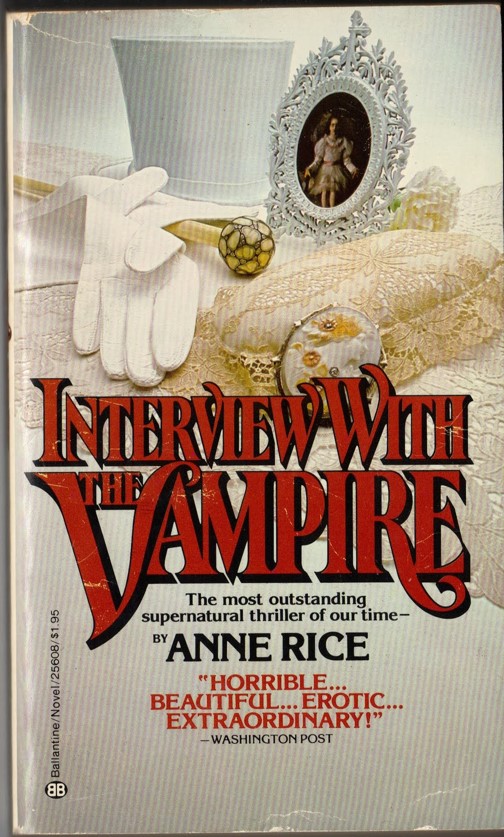 On last week’s NCompass Live, we talked about book to film adaptations. Is the book always better than the film? Can the film be as good as the book? You may be surprised to hear the answer can be yes!
On last week’s NCompass Live, we talked about book to film adaptations. Is the book always better than the film? Can the film be as good as the book? You may be surprised to hear the answer can be yes!
One of my personal favorite book to movie adaptations is Interview with the Vampire, by Anne Rice. I first read the novel when I was a teenager and loved it. I was immediately hooked on Anne Rice. There is an amazing depth to her story writing. The history of the characters and the worlds she creates makes you want more. I’ve read and enjoyed many of her novels since then, but being my first, the Vampire stories remain my favorites.
When they first announced that they were making a movie of Interview with the Vampire, I was at first very excited. Then, when they announced that Tom Cruise would star as Lestat, like Anne Rice herself, I became very concerned. He was definitely NOT what I pictured Lestat to be. But, despite my reservations, I tend to be open minded when it comes to movies or TV shows being made of any of my favorite stories, so I tried to be optimistic.
Then I saw the film, and all my fears were put to rest. It was perfect! It was exactly how I had pictured it in my mind when I read the book. Louis, Lestat, and especially Claudia had stepped out of my head and onto the screen. In my opinion, Interview with the Vampire is definitely one example where the movie is just as good as the book.
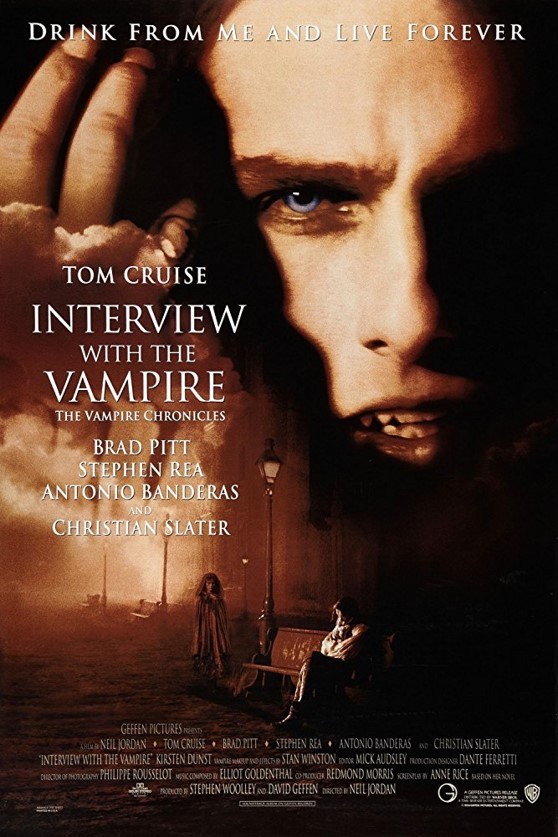 So, if you’ve only read the book I highly recommend checking out the movie. And vice versa. If you’ve seen and enjoyed the movie, I think you will also enjoy the book.
So, if you’ve only read the book I highly recommend checking out the movie. And vice versa. If you’ve seen and enjoyed the movie, I think you will also enjoy the book.
And if you decide, like me, that you want even more of Anne Rice’s stories on the screen, you’re in luck! The Vampire Chronicles, the ongoing series of Rice’s books about her vampires, is being developed into a TV series. Anne Rice and her son, Christopher (also a best-selling author) are executive producing the series, which will air on Hulu. Naturally, I have high hopes for the show. I can’t wait to see how it looks when the author herself is involved with the production.
Want to watch our NLC Staff discuss book to film adaptations? Check out the archived recording of NCompass Live: Book vs. Movie: The Ultimate Showdown!
Friday Reads: Short Story Binge
The Booklist Reader recently had a blog post about short stories that have been turned into feature films, leading with the announcement of a new film adaptation of The Lottery by Shirley Jackson. My first thought was that it would be difficult to create a full-length movie out of such a short story, but the more I sat with it, the more it made sense. After all, most movies based on books have to trim the story considerably to fit within the allotted time. With a short story, you can capture the entire plot, or even expand as needed, playing with pacing and visual and sound effects.
The list of short stories and their corresponding big screen treatment inspired me to pick up a few of the suggested titles, so I’ve been having my own “short-story-athon” this past month. Here are some of the collections I chose from Booklist Reader’s list that I would recommend for anyone looking for a break from 300+ page novels:
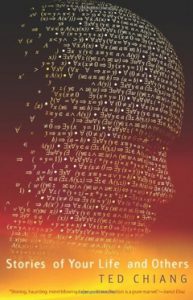 Stories Of Your Life and Others by Ted Chiang. A collection of science fiction and fantasy tales, the title story was the basis for the 2016 movie Arrival.
Stories Of Your Life and Others by Ted Chiang. A collection of science fiction and fantasy tales, the title story was the basis for the 2016 movie Arrival.
Hateship, Friendship, Courtship,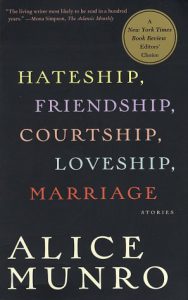 Loveship, Marriage by Alice Munro. The title story was adapted into Hateship Loveship with Kristen Wiig of SNL fame and is currently streaming on Netflix.
Loveship, Marriage by Alice Munro. The title story was adapted into Hateship Loveship with Kristen Wiig of SNL fame and is currently streaming on Netflix.
 Short Cuts by Raymond Carver. Robert Altman adapted this collection for the screen, and he writes the introduction.
Short Cuts by Raymond Carver. Robert Altman adapted this collection for the screen, and he writes the introduction.
 The Safety of Objects by A.M. Homes. Tales of suburban life and how you never know what is happening behind closed doors. The movie didn’t get rave reviews, but don’t let that dissuade you from reading it.
The Safety of Objects by A.M. Homes. Tales of suburban life and how you never know what is happening behind closed doors. The movie didn’t get rave reviews, but don’t let that dissuade you from reading it.
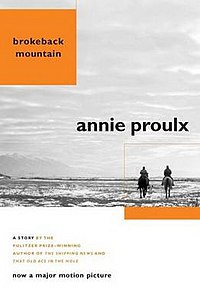 Brokeback Mountain by Annie Proulx. My library didn’t have the collection that this story is in (Close Range, one of three collections she wrote set in Wyoming), but I was able to listen to just Brokeback Mountain as an audio download during my commute one day. The movie stays very true to the story, and is a great example of why short stories make good films.
Brokeback Mountain by Annie Proulx. My library didn’t have the collection that this story is in (Close Range, one of three collections she wrote set in Wyoming), but I was able to listen to just Brokeback Mountain as an audio download during my commute one day. The movie stays very true to the story, and is a great example of why short stories make good films.
Love movies based on books? (Or hate ’em?). If you missed our recent NCompass Live discussion on the topic, you can catch it in the archives: Book Vs Movie: The Ultimate Showdown!
Chiang, Ted. Stories Of Your Life and Others. 2014. Audio.
Munro, Alice. Hateship, Friendship, Courtship, Loveship, Marriage. 2001. Print.
Carver, Raymond. Short Cuts. 1993. Print.
Homes, A.M. The Safety Of Objects. 1990. Print.
Proulx, Annie. Brokeback Mountain. 2005. Audio.
Posted in Books & Reading
Tagged #booktofilm, #booktomovie, #FridayReads, #shortstories, Friday Reads
Leave a comment
Friday Reads: How We Roll by Natasha Friend
 I borrowed How We Roll from the library as I enjoy this author’s work and had not seen her newest book until I ran across it on their “New Books” shelf.
I borrowed How We Roll from the library as I enjoy this author’s work and had not seen her newest book until I ran across it on their “New Books” shelf.
Quinn (high school freshman) and her family have moved from Colorado to Massachusetts for a new school for her younger brother, Julius, who is on the autism spectrum. This is good for Quinn, too. She has lost all of her hair to alopecia and a fresh start is great since Colorado is where her friends backed away from her and then there was a sexual harassment episode that wouldn’t go away. Now, in Gulls Head, Mass. She will wear a wig and no one will know about her alopecia. Instead she worries the wig will fall off or move, and it itches like crazy.
At her new school she makes friends and learns a bit about Nick who is in a wheelchair and not friendly in study hall. He has his reasons for being rude.
Good friends are worth gold, and Quinn has found them at her new school, though she is afraid to trust them at first. Helping her brother can be tough, but he is only being himself. Now a potential new friend for her, Nick has his own issues but also begins to show a considerate side.
As SLJ mentions, readers of The Running Dream or The Fault in Our Stars will likely pick this one up.
And please accept my deep apologies for posting this very late “Friday Reads!”
Friend, Natasha. How We Roll, 2018. Print.
Friday Reads: Sharp Objects by Gillian Flynn
I started r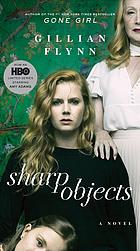 eading Sharp Objects after I started watching the HBO show. Gillian Flynn, the author, helped adapt the book for television, and I find more similarities than differences—though some of my friends who have been longtime fans of the book don’t agree with me. I think it’s the same story, told in different ways—like having a different relative go through a photo album with you, and hearing different details than you heard last time. This book and show illustrate effectively how there are different ways to tell stories, and some work better on the page, and some work better on the screen.
eading Sharp Objects after I started watching the HBO show. Gillian Flynn, the author, helped adapt the book for television, and I find more similarities than differences—though some of my friends who have been longtime fans of the book don’t agree with me. I think it’s the same story, told in different ways—like having a different relative go through a photo album with you, and hearing different details than you heard last time. This book and show illustrate effectively how there are different ways to tell stories, and some work better on the page, and some work better on the screen.
I could discuss the similarities and differences at length, but to focus on one aspect that won’t give too many spoilers—let’s talk about the roller skating. There are no roller skates in the book, but there is Camille’s first person narration (that, wisely, was not brought over to the show). Camille’s first person narration in the book tells us things that the roller skating shows us on the screen. The first episode opens with a flashback of Camille and her first younger sister skating outside of their small Missouri town. We can see Camille’s zest for life and freedom, her sister Marian trying to keep up, Camille keeping an eye on her. We see the setting is quiet enough for these girls to explore their environment in this innocent, edge of reckless, way.
By the time we get to the present-day of the story, the roller skates are on Camille’s second younger sister, Amma, and her two friends. (Trivia time: the actors playing her friends are sisters in real life, with a background in figure skating.) As viewers, we still align our point of view with Camille, as we do as readers—even though the show adds some scenes that aren’t from Camille’s point of view, the show is still from her worldview. Now the roller skates, on tween girls that aren’t Camille, serve a different purpose: these girls don’t stay in place long enough for most people to figure them out. They zip around their little town, risking their life (as the town police officer once points out) in traffic and without helmets, with all the vulnerability and invulnerability of the middle-schooler. From a strictly cinematic point of view, it’s uncanny: these characters are moving in a way that is out of pace with the other characters. The sound editing here is fantastic as well. Even if the dialogue was sometimes so quiet that mumbles and drawls had to replayed, the sound of the skates was rhythmic and insistent and yet natural—almost like the bugs would have sounded, in summertime Missouri, if the show had gone for real over surreal.
In later episodes, we see the roller skates one more time on Camille and once on another character—and each time we understand more about the wearer of the skates just because they’re wearing them.
We have this title in the Library Commission’s book club kits, and I’m surprised it’s not checked out right now. (Get on that, readers in Nebraska!) This would be a great book for a book club—lots of unexpected twists and turns, and unexpected and important topics, in a quick read. And your book group could discuss the show as well.
If you’re ready for more book vs. movie/television discussion, don’t miss our upcoming NCompass Live, Book vs. Movie: The Ultimate Showdown! online Wednesday September 12 at 10AM. (The archived session will be online, if that time doesn’t work for you.)
Flynn, Gillian. Sharp Objects: A Novel. , 2006. Print.
Noxon, Marti, creator. Sharp Objects. Crazyrose, Fourth Born, Blumhouse Television, Tiny Pyro, Entertainment One, 2018.
(This show is full of wonderful performances and film-making decisions that didn’t fall under the the topic of my blog post–Full cast and crew for Sharp Objects on IMDB)
Friday Reads: A Study in Emerald
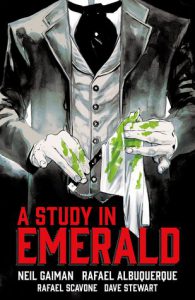 Sherlock Holmes & Lovecraftian Mysteries
Sherlock Holmes & Lovecraftian Mysteries
“A Study in Emerald” was a short story that appeared in the 2003 Shadows Over Baker Street anthology (also a good book). Now this story appears as its own new shiny graphic novel.
An ex-military man and his new detective friend must solve a baffling murder with a few clever twists (especially with the ending) and some cosmic horror. Without giving too much away, it’s a fascinating blend of these two universes and characters. Quick read. Wonderful artwork.
Friday Reads: Wired by Julie Garwood
Di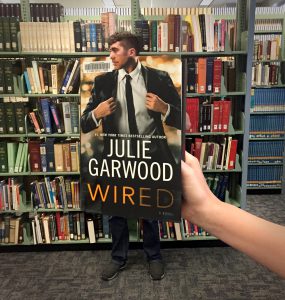 sclaimer: I finished reading this book a week or two ago. Then I found out it was this week’s #BookFaceFriday. I couldn’t resist the temptation.
sclaimer: I finished reading this book a week or two ago. Then I found out it was this week’s #BookFaceFriday. I couldn’t resist the temptation.
“A beautiful computer hacker and a bad-boy FBI agent must collaborate…in more ways than one…” Sometimes Goodreads just has the perfect descriptions. I can’t describe Wired by Julie Garwood any better than that. In this book, Allison Trent is a freakishly brilliant computer hacker who has a day job as a supermodel. Yes, you heard me.
Liam Scott is an FBI agent with a prickly exterior who is in a bind and needs a freakishly brilliant computer hacker to casually break into the FBI servers. He is ready and willing to break every rule in the book to complete his mission. But, don’t worry, he has a heart of gold.
Allison would love to help, but she has a super secret double life she doesn’t want anyone to know about! Fear not, I didn’t give any spoilers here. The reader knows about her double life nearly from page one. She is casually breaking a few rules of her own to use her super secret computer powers for good.
You may have noticed this, but Wired is a romantic suspense novel. This book is probably not going to radically change the way you see the world. But it sure is entertaining. Every page you turn reveals a new plot line fresh out of the Romantic Suspense Book of Clichés. It was deliciously predictable in all the right ways and was the perfect way to relax on a lazy weekend.
Read it to find out if two prickly people with a secret heart of gold can collaborate…in more ways than one.
Posted in Books & Reading, General
Tagged #FridayReads, Book Review, Friday Reads, Julie Garwood, Wired
Leave a comment
Friday Reads: Canada by Mike Myers
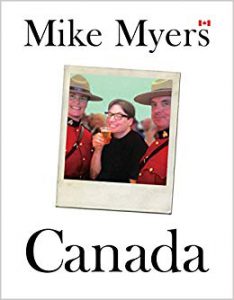 Canada by Mike Myers
Canada by Mike Myers
Publisher: Doubleday Canada (October 22, 2016)
This title came to my attention on July 1st aka Canada Day as the daily special from Audible. I was intrigued, downloaded the title, and eagerly began listening. It helps that the author of whom I have long been a fan reads this title.
Myers begins with the premise that Canada lacks a mission statement. The country promises to provide good government and a safe place to live but is that enough? The inevitable comparisons to life in the United States make up a great deal of content. He compares regional colloquialisms, health care, the love of hockey, and the government supported CBC to their American counterparts. The United States does not propagate information about Canada so there may be many episodes in Canadian history that will be new information. To drive this point home, when my curiosity was piqued for the Prime Minister Pierre Trudeau, father of the current Prime Minister Justin Trudeau, I looked for books to read more about him from my local library, but there were none.
Mike Myers was born to two Liverpudlian parents who immigrated to Canada for better employment opportunities. English parents making a life in Canada caused a clash of culture. Mike shares how the values of his parents and the humor of his brothers Peter and Paul shaped his worldview and brand of comedy. One of the attributes of his father in often-difficult situations was a non-rhetorical question of “how can we make this funny?”
Mike shares how his character Wayne Campbell (Wayne’s World) is a quintessential Canadian creation, specifically from the Scarborough district of Montreal, dissecting everything from his language to his name. Other Saturday Night Live characters also owe their origin to Mike’s Canadian and British upbringing. With Canadian, British, and United States Citizenship, it’s clear that Mike Myers is a very proud Canadian patriot despite being an expatriate.
Myers, Mike (2016) Canada. Doubleday Canada
Friday Reads: To the Stars Through Difficulties
 From the author’s website:
From the author’s website:
“To the Stars Through Difficulties (She Writes Press, 2017) is inspired by the fifty-nine Carnegie libraries built in Kansas early in the 20th century.
Andrew Carnegie was the Johnny Appleseed of libraries – but public libraries would never have thrived on the prairie in the early 20th Century if it weren’t for the women in small and remote communities who sponsored waffle suppers, minstrel shows, and women’s baseball games to buy books.
Angelina returns to her father’s hometown of New Hope to complete her dissertation on the Carnegie libraries, just as Traci arrives as artist-in-residence at the renovated Carnegie Arts Center, just when Gayle takes refuge after the devastation of the neighboring town of Prairie Hill by a tornado. Discovery of an old journal provides not only the information Angelina needs to finish her dissertation but also the ammunition to save the Arts Center from attacks by the Religious Righteous and the inspiration for the neighboring and rival town of Prairie Hill to build a cultural center as the first act of reclaiming their lives after the tornado.”
This is definitely a book for library lovers. The history of Carnegie libraries is beautifully interwoven within the story of the present day struggles and triumphs of the libraries/arts/cultural centers of the novel. As a librarian, I of course identified with library school student Angelina. But, the strength, intelligence, and determination of all of the women is inspiring. A very well written, feel-good read … perfect for a relaxing summer vacation or book club discussion.
Want to learn more? Romalyn Tilghman, author of To the Stars Through Difficulties, was on a recent episode of NCompass Live. Check out the archived recording!
Friday Reads: I Am Gandhi: A Graphic Biography of a Hero by Brad Meltzer
As graphic novels have gained popularity and recognition as legitimate reading, authors and illustrators continue to expand into other areas. Although nonfiction told in graphic novel format has been around for 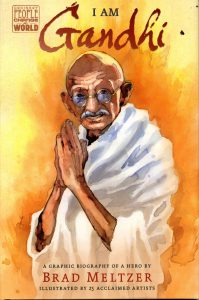 quite some time, it seems in recent years more opportunities have been taken. Well-known nonfiction writer, Brad Meltzer, has created a slim volume the publisher is calling a graphic biography.
quite some time, it seems in recent years more opportunities have been taken. Well-known nonfiction writer, Brad Meltzer, has created a slim volume the publisher is calling a graphic biography.
I Am Gandhi is illustrated by 25 artists, with the variety of art strengthening this excellent biography of an outstanding man. Meltzer tells of his childhood in India, his time spent in London and South Africa, and mentions a particular picture book that influenced his life. It is written as if Gandhi himself is telling of his life to a small group of children. How he developed his non-violent approach, what existing ideas influenced him in its development, and how he and others put it into practice are all included.
This title is a good introduction to Gandhi, his life and beliefs. It may guide readers to look for more in-depth information about him. The timeline, quotes, and photos at the back of the book add to his story.
Librarians may see the title and author and think of his series of biographies for much younger readers, also titled “Ordinary People Change the World.” This younger series is aimed at kindergarten through grade 3 and gives a much briefer look at a number of amazing people.
Meltzer, Brad. I Am Gandhi: A Graphic Biography of a Hero. , 2018. Print.
Posted in Books & Reading, General
Tagged #FridayReads, Brad Meltzer, Friday Reads, graphic novel, I Am Gandhi
Leave a comment
Friday Reads: I’ll Be Gone in the Dark by Michelle McNamara
 Sometimes a book in your read-me-next list jumps to the front of the pack. I read the news reports like everyone else, a month ago, April 25, 2018—the Golden State Killer had finally been arrested. Over thirty years since his last likely murder, authorities arrested a suspect, 72-year-old Sacramento resident Joseph James DeAngelo, a former police officer, based on DNA evidence. I thought to myself: it’s time to read that book by Michelle McNamara, before I read anything else.
Sometimes a book in your read-me-next list jumps to the front of the pack. I read the news reports like everyone else, a month ago, April 25, 2018—the Golden State Killer had finally been arrested. Over thirty years since his last likely murder, authorities arrested a suspect, 72-year-old Sacramento resident Joseph James DeAngelo, a former police officer, based on DNA evidence. I thought to myself: it’s time to read that book by Michelle McNamara, before I read anything else.
I’ll Be Gone in the Dark: One Woman’s Obsessive Search for the Golden State Killer chronicles McNamara’s tireless research into the then-cold case of the serial killer (and rapist and burglar) that she dubbed the Golden State Killer, a moniker now solidified by recent media attention. While I’m not a true-crime buff, I am a lover of research and storytelling and problem-solving, and McNamara’s journey is thoughtfully told, somehow incredibly informative without ever being lurid or sensational. She never exploits or re-victimizes the people who had the misfortune to experience the mystifying, seemingly random violence of the Golden State Killer. The events in the book are not detailed chronologically from the Killer’s perspective, either, which would be more expected. This structure of the presentation of events seems to de-center and deflate the Killer, which is poetic, considering his need for control. Truly, this book is not really about him.
We read about his crimes in different geographic areas of law enforcement, between 1974 and 1986, and how different agencies put together that the crimes in their area might be committed by one offender. And then, occurring much later, we read how investigators realized how all these offenders (the East Area Rapist, the Original Night Stalker, the Visalia Ransacker, etc.) might be one extremely prolific criminal, that we now know as the Golden State Killer. McNamara details the protocols of investigations, and how they were changing, especially related to DNA collection and testing. She also did copious research herself, and interviews other researchers, amateur and professional, for a fascinating look into the minds of those who try to solve crimes.
McNamara died before she could complete the book. I didn’t know much about her or her writing career before she died. I was familiar with the work of her husband, Patton Oswalt, having enjoyed reading his books and watching his stand-up routines. McNamara was well-known in true crime circles for her blog TrueCrimeDiary, which focused on—you guessed it—true crime and cold cases, an interest she had ever since the unsolved murder of a teenager in her neighborhood as a child. When she died unexpectedly in 2016, McNamara had mostly completed the book, and had written many articles about the case and made extensive notes. The book was completed, faithful to its original intent, by a true crime writer she had worked with previously (Paul Haynes) and Oswalt. The editors have made it very clear what was written by her, what was transcribed from her notes and recordings, what was adapted from her published articles, and so on.
The book was released in February 2018, and it was the story of its posthumous publication that attracted me to it at first. Then HBO purchased the rights, and I was even more interested. And you already know what happened on April 25, 2018.
The title sounds like an odd choice, but when you read the chapter it comes from—a letter McNamara wrote to the Killer, about his eventual capture that she was certain would occur, written long before April 25,, 2018—you’ll understand why it was chosen for the title.
Of interest to library workers: using WorldCat as a research tool, on p 269, in a chapter called “The One.” In this engrossing chapter, we read about the “one” suspect on which various investigators each fixated, how they were each sure they had finally figured out who their suspect was, and then how all the different “ones” were ruled out. (Sidney, Nebraska is also mentioned on p 269—but don’t worry, just read the chapter.)
Also of interest to Nebraskans: the epigraph is a poem by Weldon Kees, “Crime Club.” It helps set an eerie tone for a book as much about the people solving a crime as it is about crime or a criminal. Sure, after you finish the book, you’ll probably want to dive into the news reports about Joseph James DeAngelo. (There’s plenty to read about him already, and more will come out when we get closer to a trial.)
But you might also take a little time to appreciate Weldon Kees. And look into the mystery of his disappearance, if you choose. Or just enjoy some of his poetry.
McNamara, Michelle. I’ll Be Gone in the Dark: One Woman’s Obsessive Search for the Golden State Killer. , 2018. Print.
Friday Reads: Moon by Alison Oliver
 Moon is overwhelmed with homework, music lessons, soccer practice, chores, and stuff. Every single day is the same.
Moon is overwhelmed with homework, music lessons, soccer practice, chores, and stuff. Every single day is the same.
But she wonders how it could be if she just didn’t have to do these things.
Following a shooting star and some paw prints into the forest, Moon meets a wolf who, along with his pack, shows her their “wolfy ways” – how to play, how to be still, and how to be wild.
Moon, written and illustrated by Alison Oliver (2018), is a sweet story with beautiful, expressive pictures about balancing the day-to-day busy schedules with time spent outside, playing and connecting.
Friday Reads: 45 Pounds, by K.A. Barson
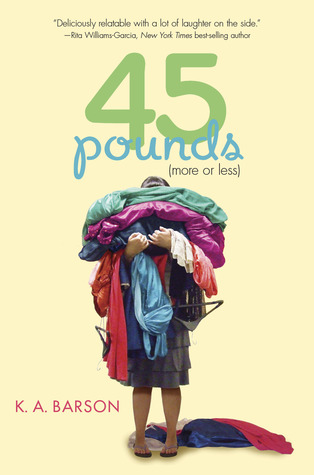 Overweight heroines have a special place in my heart. You would never guess why. It is like the holy grail when they appear in young adult fiction. In K.A. Barson’s 45 Pounds, the wayward Ann Galardi is 16, a size 17, and trying to find her way in life. Through a series of unfortunate life circumstances, she believes that happiness can only be found after losing 45 pounds.
Overweight heroines have a special place in my heart. You would never guess why. It is like the holy grail when they appear in young adult fiction. In K.A. Barson’s 45 Pounds, the wayward Ann Galardi is 16, a size 17, and trying to find her way in life. Through a series of unfortunate life circumstances, she believes that happiness can only be found after losing 45 pounds.
If there are any overweight teenagers reading this right now, you should know that that is the least true thing on the planet! Overweight adults should listen up as well. I am a firm believer that when life gives you lemons, you make lemon bars! With a caramel macchiato. And a carrot to balance things out.
On an unrelated note, I completely related to Ann when she got stuck in a dress in the dressing room. I sifted through some of the Goodreads reviews to this book and was astounded by the number of people who have never gotten stuck in a dress in the dressing room. It can happen to anyone! Really. It was the zipper’s fault. Speak of this to no one.
Anyway, I digress. Ann was the most relatable overweight heroine I have read in a good long time. Most of the books with this theme disappoint me because they all end with the heroine starving herself, losing the weight, and landing the extra hunky dream guy. That is not life!
Life is being overweight and finding a job at a fast food place in the mall where all your skinny peers can point and laugh as they walk in while you’re doing embarrassing things. That was Ann, not me. You’ll have to read the book to verify.
It really doesn’t help that Ann’s mother is a size 6 and would like nothing more for her daughter to be her mini-me. I’m here to tell you that you should just embrace the fat. After you embrace the fat, self-confidence comes along, then you can work on getting to a healthy weight without hating yourself along the way. Easier said than done.
This book teaches you all of those things through an adorably awkward character. Is there a hunky character? Maybe. You’ll just have to find out.
Friday Reads: The Archivist, by Martha Cooley
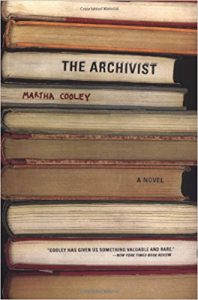 Matthias Lane is a library archivist, a widower nearing retirement at an American university, who guards the rules of the library’s archives religiously. Case in point—the archives has among its’ collections the letters written by T.S. Eliot to Emily Hale, a close personal friend. Graduate student Roberta Spire wants access to those letters, but the instructions left when the letters were donated do not allow public viewing until the year 2020. Roberta believes that the letters will give insight into why Eliot enjoyed female companionship, but was so emotionally detached from his wife, as well as to why Eliot became religious. At first, Matthias sees Roberta as only another grad student doing research. But as Roberta persists in wanting to read Eliot’s letters, Matthias is intrigued by her persistence, and by her knowledge of Eliot’s life and poetry that matches his own. As Matthias gets better acquainted with Roberta, he begins to realize that his own life and marriage are similar to Eliot’s, which Matthias has not previously examined in depth. As a result, his dilemma over Eliot’s letters ends in a completely unexpected solution.
Matthias Lane is a library archivist, a widower nearing retirement at an American university, who guards the rules of the library’s archives religiously. Case in point—the archives has among its’ collections the letters written by T.S. Eliot to Emily Hale, a close personal friend. Graduate student Roberta Spire wants access to those letters, but the instructions left when the letters were donated do not allow public viewing until the year 2020. Roberta believes that the letters will give insight into why Eliot enjoyed female companionship, but was so emotionally detached from his wife, as well as to why Eliot became religious. At first, Matthias sees Roberta as only another grad student doing research. But as Roberta persists in wanting to read Eliot’s letters, Matthias is intrigued by her persistence, and by her knowledge of Eliot’s life and poetry that matches his own. As Matthias gets better acquainted with Roberta, he begins to realize that his own life and marriage are similar to Eliot’s, which Matthias has not previously examined in depth. As a result, his dilemma over Eliot’s letters ends in a completely unexpected solution.
This book appealed to me on two levels: it was a story involving a library archives, and a story based in historical fact. The letters of T.S. Eliot to Emily Hale are real, and are kept in the Firestone Library, at Princeton University. The letters are not to be shown to the public until January 1, 2020.
The Archivist, by Martha Cooley, was written 20 years ago, it was is still a great read, and I highly recommend it.
Friday Reads: The Woman in the Window by A. J. Finn
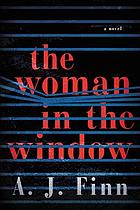 A. J. Finn’s The Woman in the Window is a whodunit thriller with lots of surprises and unexpected outcomes. The book has been likened to Paula Hawkins’ The Girl on the Train and Gillian Flynn’s Gone Girl and with elements of a Hitchcock movie.
A. J. Finn’s The Woman in the Window is a whodunit thriller with lots of surprises and unexpected outcomes. The book has been likened to Paula Hawkins’ The Girl on the Train and Gillian Flynn’s Gone Girl and with elements of a Hitchcock movie.
Anna Fox, a psychologist in her late 30s, is the protagonist. Anna lives alone in an upscale Manhattan home. A young carpenter is a tenant who occupies the basement. The reader soon learns that Anna is agoraphobic and has not left her home during the past year. While living alone she has frequent phone conversations with her husband and 8-year-old daughter who are supposedly living elsewhere. Much of Anna’s time is spent watching black and white movie classics. Home bound, Anna observes her neighborhood and neighbors from her living room window. It is there that she witnesses, from a distance, a violent act in a home occupied by a family new to the neighborhood.
Anna’s fear of leaving her home, her aloneness and depression contribute to excessive drinking with wine as her favored drink. Her drinking, mixed with prescription drugs, compromises her credibility when she reports the incident to the police. Is she delusional? The conflict grows from there among Anna, the new and troubled neighbors, the police, and even her tenant. And there is Anna’s past – how did she become agoraphobic? What’s the story behind the absence of her husband and daughter?
The Woman in the Window is A. J. Finn’s first novel and a best seller from the get go. Though, not surprising because Finn (a pseudonym) is Dan Mallory, an experienced executive mystery fiction editor for William Morrow, the books publisher.
Finn, A J. The Woman in the Window. HarperCollins, 2018. Print.
Posted in Books & Reading
Tagged "The Woman in the Window", #FridayReads, A.J. Finn, Fiction, Friday Reads, Novel
Leave a comment


